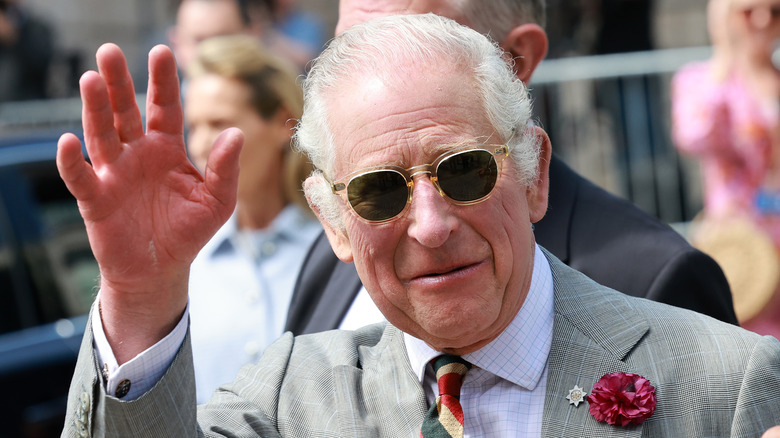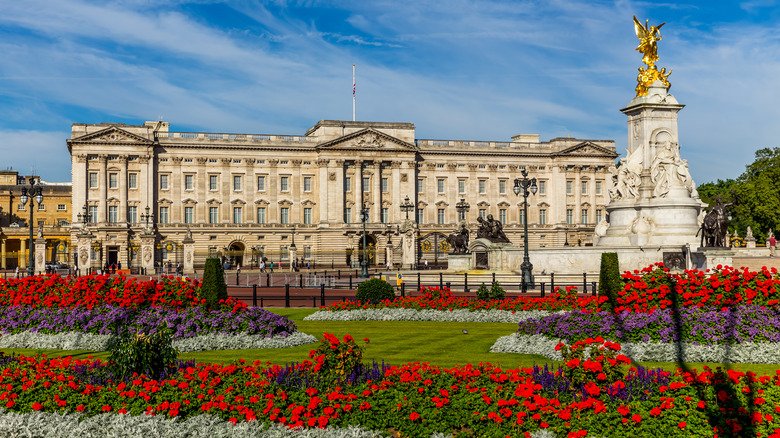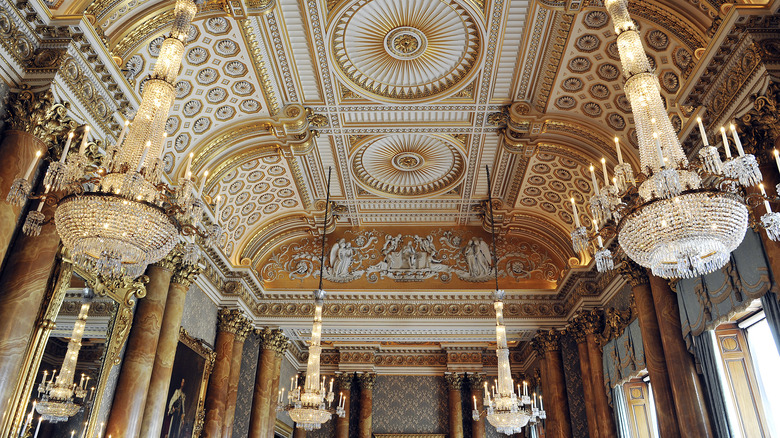Why King Charles Is In 'No Rush' To Move Into Buckingham Palace
Amid the numerous, opulent royal residences, Buckingham Palace stands out. Situated in London, the palace started out as a more modest building and was expanded considerably by King George IV to create an awe-inspiring impression on visitors to Britain's capital. Buckingham Palace has served as the workplace and home of British monarchs since Queen Victoria moved there in 1837. Victoria was excited to live there, and as her children were born, she remodeled the palace to suit her needs as a mother and a monarch.
However, not every inheritor of the crown has been thrilled at the prospective of moving there. When Queen Elizabeth II ascended the throne in 1952, she would have preferred to continue residing at Clarence House with Prince Philip and her two young children. "None of them wanted to go. They loved Clarence House; it was a family home, but Winston Churchill, who was then Prime Minister, insisted upon it," wrote Penny Junor in "The Firm," per The Mirror.
Elizabeth's ambition was to live at Clarence House and work out of Buckingham Palace, an idea that her son, King Charles, is now putting into practice. Charles moved back to Clarence House in 2003, and after 20 years, he has comfortably decorated his gorgeous home to suit his style. Charles may end up officially living in the palace eventually, but, unlike his mother, a major construction project is supplying the king with an additional reason to postpone moving for the near future.
Buckingham Palace is in the middle of extensive renovations
Since 2017, Buckingham Palace has been part of a 10-year, £369 million renovation project. It's a 775 room palace, so there's a lengthy to-do list, including modernizing the 1950's era electrical, plumbing, and heating systems. King Charles' private housing within the palace happens to be among the final tasks, which is why he isn't packing his bags yet. "It is not possible for Their Majesties to move in at present," a palace spokeswoman explained to The Washington Post. "It remains the expectation they will do so when the work is complete." Charles' staff has maintained since 2017 that he will live and work out of Buckingham Palace eventually.
In the meantime, Charles will continue living at Clarence House and using the palace for working and royal events. "Clarence House is the least palatial of all the residences in London," author Robert Lacey informed the BBC. Lacey notes that the residence has sentimental appeal, since the Queen Mother lived there and Charles had a close relationship with his grandmother.
A smaller home would likely be preferable to the thrifty king, who's worked for years to reduce the carbon footprint of royal estates like Highgrove. Recently, he's been keeping Buckingham Palace's pool at a cooler temperature to save money and energy. However, the palace's huge size presents a massive challenge. "He feels its upkeep, both from a cost and environmental perspective, is not sustainable," a source revealed to The Times in 2017.
Charles wants to make royal houses more accessible to the public
Besides residential and office space, King Charles has another potential plan for Buckingham Palace: turning it into a tourist space. "In the modern era people want to be able to access their palaces. He embraces that and sees them as public places more than private spaces," a royal source told The Times. Once construction is finished in 2027, the king plans to offer year-round opportunities to visit a palace former first lady Michelle Obama described in "Becoming" as ""breathtaking and incomprehensible at the same time," per The Washington Post. In addition, Charles could take inspiration from his work at Dumfries House in Scotland and offer educational workshops for school groups.
Buckingham Palace has been a tourist attraction since 1993 when Queen Elizabeth decided to use the revenue to refurbish a fire-damaged Windsor Castle. While Buckingham Palace's £369 renovations are taxpayer-funded, it's possible that proceeds from tourism could be utilized for future projects.
Even with an increase in visitors, there will still be ample space for the king to live in the palace. 52 bedrooms are allocated for the royal family and guests, and 188 bedrooms are reserved for royal staffers. In the interest of frugality, it's possible Charles could scale down the amount of private living space. "He will certainly have accommodation there," a friend of the king's assured the Daily Mail, "but it will be a much more modest flat-above-the-shop situation akin to that of the Prime Minister at Downing Street."


